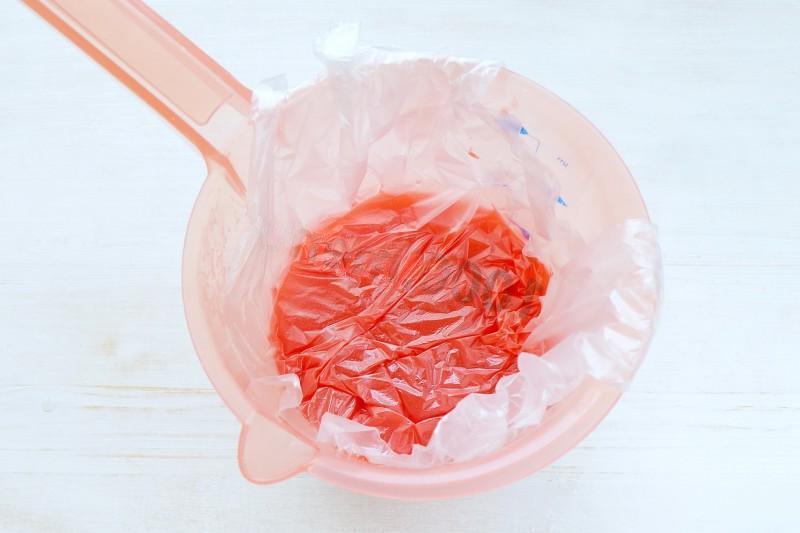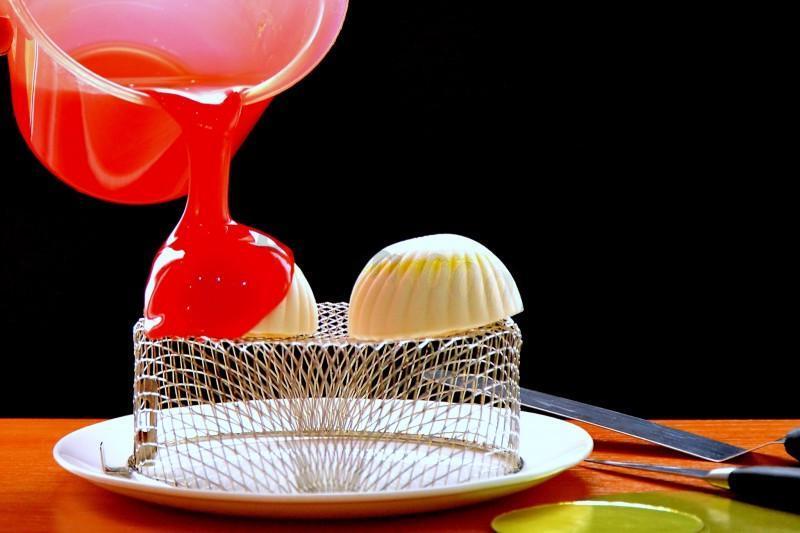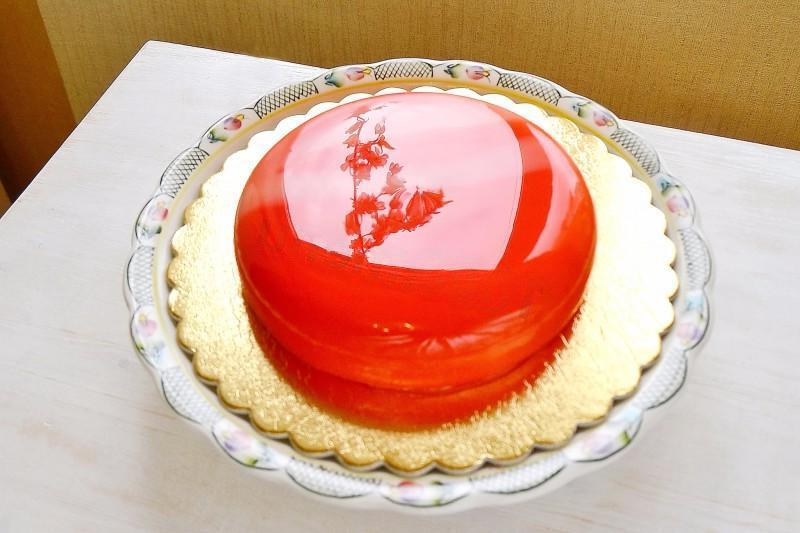Glossy Cake Glaze
Beautiful, original design for a festive table! Cake glaze is a shiny, glossy coating. Glazing adds incredible beauty to desserts that attract our attention with their extraordinary mirror shine and palette of colors. Preparing it is not as difficult as it might seem.
cook time:
25h
Isla Thatcher

Nutrition Facts (per serving)
375
Calories
9g
Fat
62g
Carbs
4g
Protein
Ingredients (3 portions)
Basic:
Sugar
150 g
Water
(plus 72ml for soaking gelatin)
75 ml
Gelatin
(sheet or powder)
12 g
Condensed milk
100 g
Food coloring
1 g
White chocolate
150 g
Invert syrup
150 g
Recipe instructions
Step 1
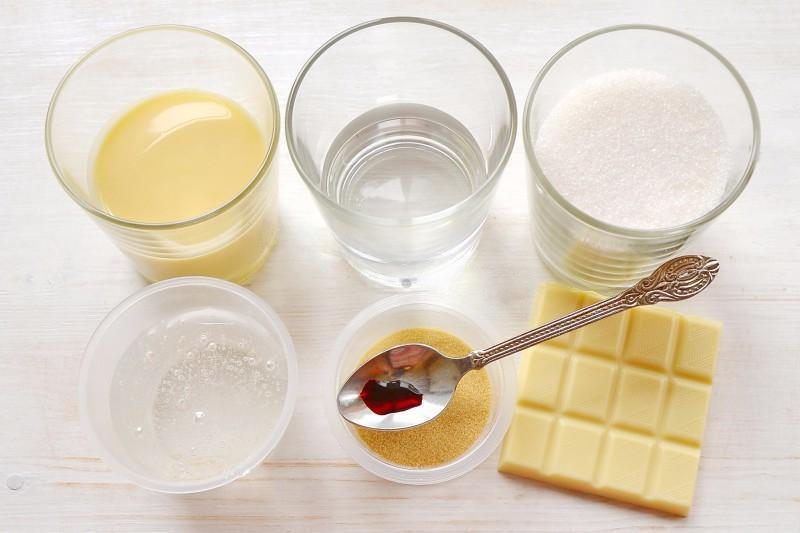
Step 2
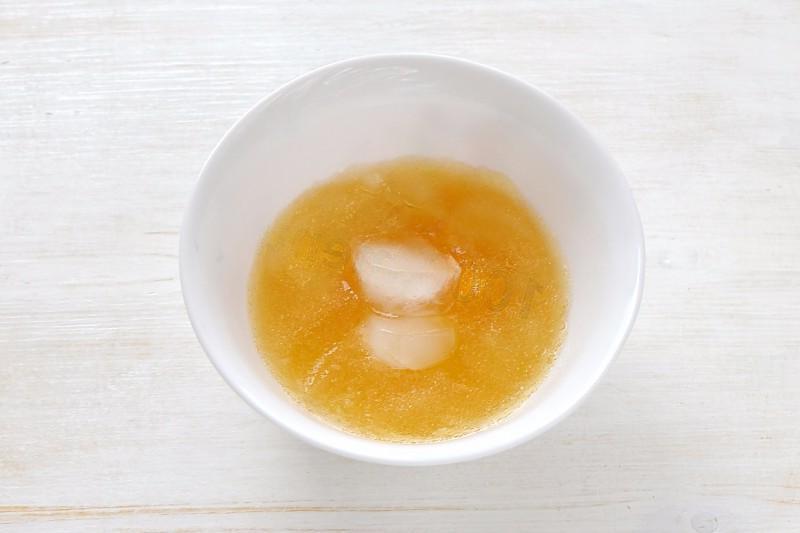
Step 3
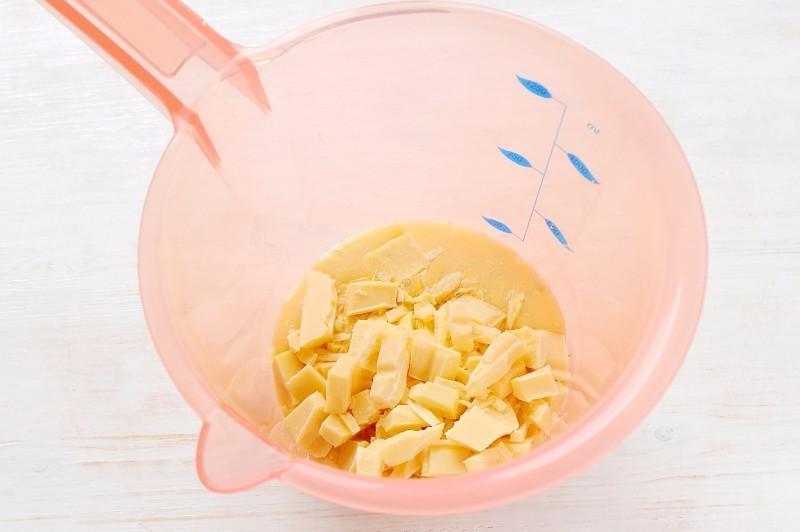
Step 4
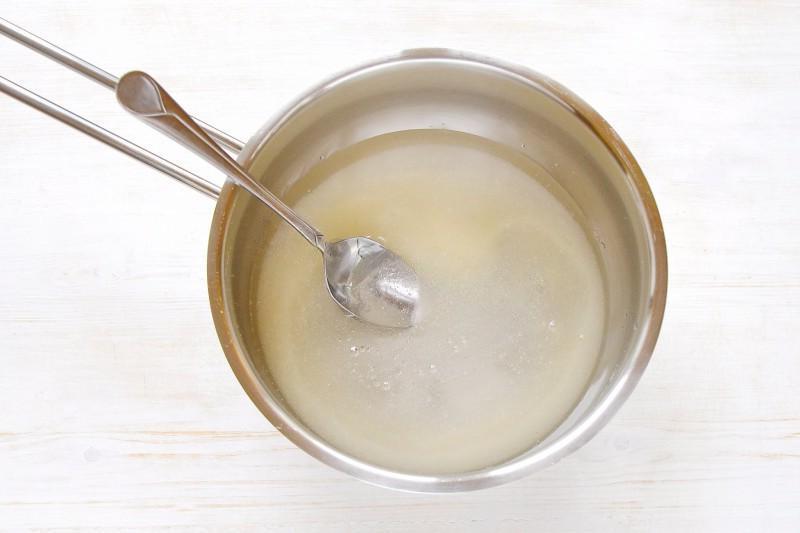
Step 5
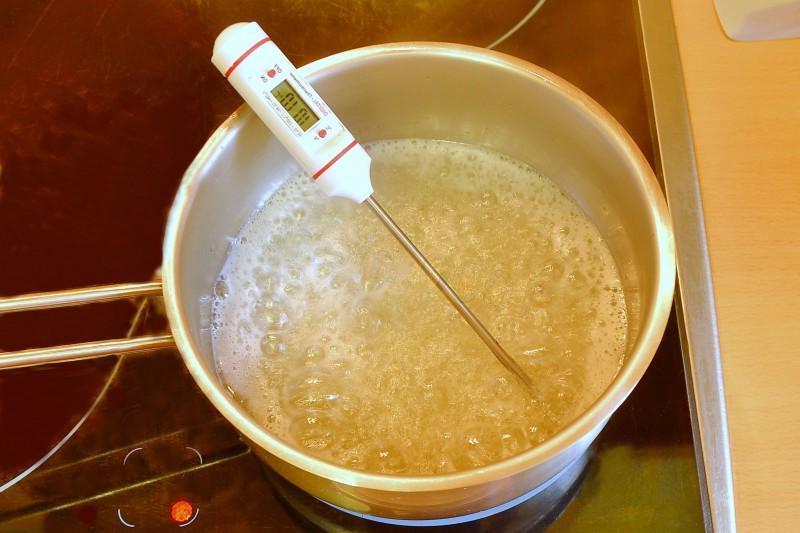
Step 6
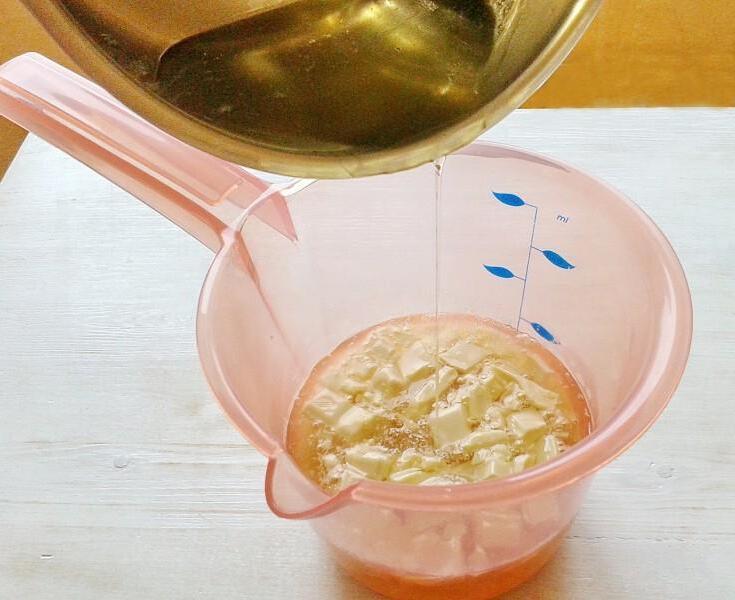
Step 7
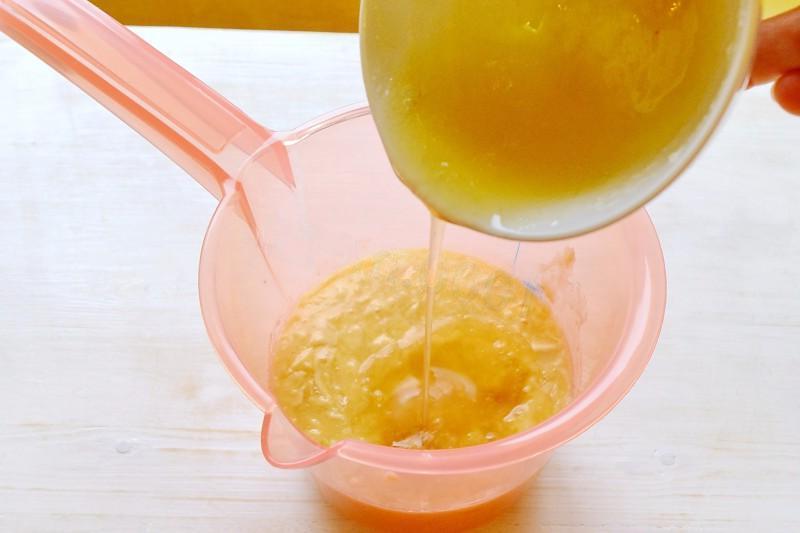
Step 8
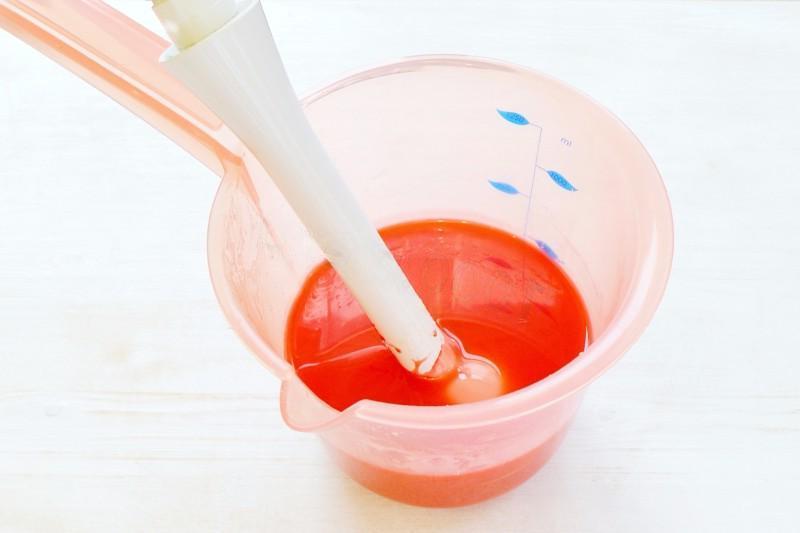
Step 9
